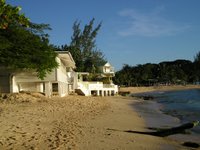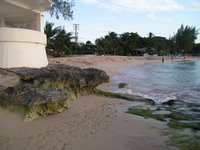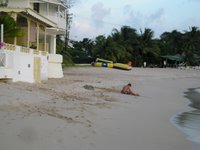

January 2006


August 2006
Here we see two photos of an area of Mullins taken in early January of this year. Note the exposed rocks and the sand cliffs built by the sea. Next we see two photos of the same area taken last month in early August. Note that the rocks are almost all invisible and there is a continuous pasture like look and feel to the beach. People who have grown up on the beach and/or lived there all their lives learn to expect and live with these dramatic changes just as people who live in temperate climates learn to live with the cold and snow in the winter and heat and the humidity in the summer. Sure, many of us would prefer to live in a place where there is summer all year round but we must also be prepared for the torrential rains and tropical downpours that come with the same climate (except, of course, we are talking about one of those fortunate or unfortunate arid and semi-arid areas which Barbados is not). Similarly, what we are ultimately saying here is that there is beauty and charm in the rocks and sand cliffs, when sometimes some may think that conditions on the beach are less than idyllic.
Please note also from the photos above the construction techniques employed on the homes which sit literally on the water's edge. Note the use of pillars and breakwaters on these houses that were constructed in the 1940s and '50s and remodeled over the years. Perhaps the people at the St. Peter Bay Development a few hundred yards up the beach should have looked here for inspiration before building the four ugly groins that now scare the beach forever.
___________
www.mullinsbay.com
___________
www.mullinsbay.com







It is true. The beach can and will change through the seasons as does the ebb and flow of the tide. Building a rock groyne or jetty in one area can also affect what is happening upstream and downstream. I witnessed this on my last trip to Mexico, where the resorts own rock groyne to mark the property had caused the beach to erode in front of their own hotel.
ReplyDelete